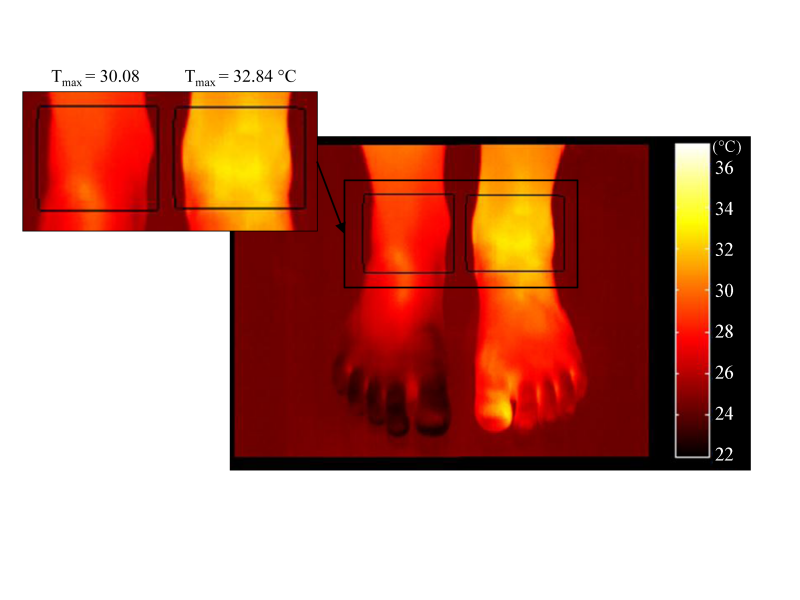Infrared thermography can detect joint inflammation and help improving work ergonomics

Infrared thermography can help detect joint inflammation and help improving work ergonomics, according to a recent study from the University of Eastern Finland.
All objects with a temperature above absolute zero emit infrared radiation as a result of the thermal motion of their molecules. Infrared thermography (IRT) is an imaging modality that can be used to detect this thermal radiation. Human skin emits infrared radiation almost like a perfect black body, and IRT is thus well suited for the measurement of skin temperature. However, although the human core temperature may be indicative of several bodily dysfunctions, there is still a lack of scientific evidence about which musculoskeletal diseases or conditions can be diagnosed by evaluating skin surface temperature with IRT. Nonetheless, since it is a non-invasive and straightforward technique, IRT may represent a cost-effective alternative to the more traditional imaging modalities.
The study evaluated the capability of IRT to detect inflammation in knee and ankle joints in children, and found that skin surface temperatures were significantly elevated in inflamed ankle joints, but not in inflamed knee joints. This means that IRT can be used as a tool for detecting joint inflammation in ankle joints; however, further research is needed to determine whether IRT can be used to detect inflammation in knee joints.
As healthcare costs are continuously spiralling, there is a clear demand for new diagnostic imaging modalities at the level of basic healthcare. This could ease the workload in specialized healthcare, make diagnostics more accessible and help reduce overall costs.
"In the future, IRT may become a complementary clinical assessment tool, and it can help in therapeutic decision-making," says researcher Roope Lasanen of the University of Eastern Finland.
Infrared thermography a tool for evaluating work ergonomics
The study also analysed skin temperature in relation to various musculoskeletal conditions. Work ergonomics was evaluated by means of IRT and surface electromyography combined with a subjective assessment conducted by a neck disability index. The study found that IRT demonstrated potential in evaluating office ergonomics and that spatial variation of upper back skin temperature was a promising measure in ergonomic assessments.
Cooling menthol gels - cold on the spot
The study also used IRT to evaluate the effect on skin temperature of the menthol concentration in cold gels commonly used for the treatment of muscle injuries. Although menthol-based cold gels are very widespread, very little is known about how the menthol concentration affects skin temperature. The study found that changes in the menthol concentration did not seem to have any significant effect on skin cooling. Furthermore, cold gels did not have a significant effect on skin temperature in surrounding skin areas adjacent to the gel application site.
Provided by University of Eastern Finland


















